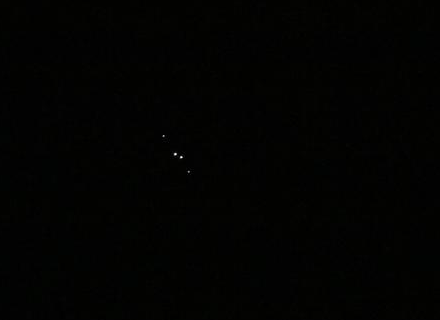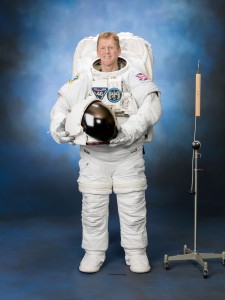Spotting a Dragon

Dragon Capsule and rocket stages photographed from Yorkshire.
Photographer: Alex Weatherall
On Tuesday night (or afternoon if you’re in the US) SpaceX launched a Falcon 9 rocket. The rocket was carrying a small spacecraft called the Dragon capsule which is destined for the International Space Station (ISS). Thanks to the joy of the internet, I was able to watch the launch live via webcam. However, even more exciting, was that 20 minutes later I could go out into my garden and watch the rocket travel overhead as it passed over the UK. You might even be able to see the Dragon capsule over the next few nights – but it’s hard to predict because its flight path changes during the mission. Virtual Astronomer has put up some details about when you might be able to see it.
The Dragon capsule is delivering supplies to the ISS – including the first ever space coffee machine! Maybe that’s because there’s currently an Italian astronaut, Samantha Cristoforetti, on board! The capsule is due to reach the ISS on Friday where two of the ISS crew will use a robotic arm to capture it.
Waving to the astronauts
Although the nights are getting lighter now, it is still possible to see the ISS pass overhead. I find it quite astonishing that I can watch a large tin can flying overhead which has other human beings living in it. I usually wave if I spot it.
The website meteorwatch.org always has the dates and times of when we can see the ISS in the UK. Here are the dates for the next few days of April.
Stargazing
Many people find the night sky fascinating. A lot of children will have been asked to keep a Lunar diary in primary school, and had great fun looking for and sketching the moon. However, I think that it’s great for young people to learn the different constellations in the night sky. Many will already know familiar once such as Orion or the Great Bear (or Big Dipper).
Using websites or apps, you can look up into the sky and spot stars and galaxies that are many, many light years away.
Of course, you can also visit a planetarium such as the one at the Centre for Life which can show you the night sky at any time of day. Even better is to go to Kielder Observatory where you will be able to use telescopes to look at the distant stars and planets.



